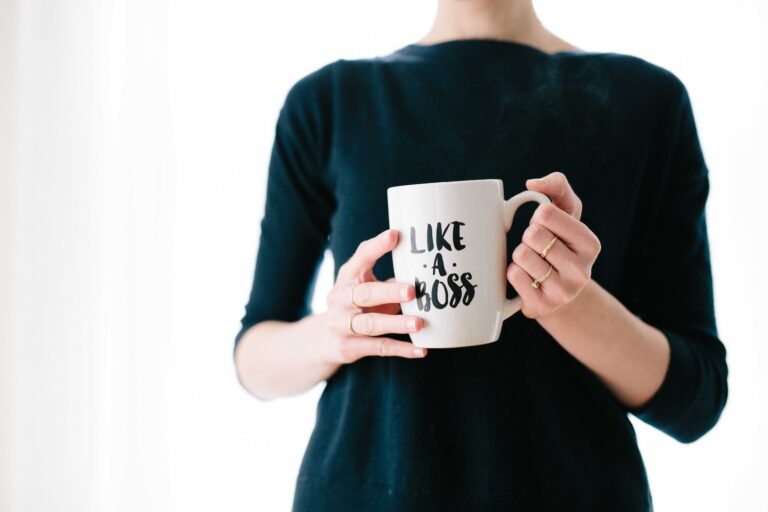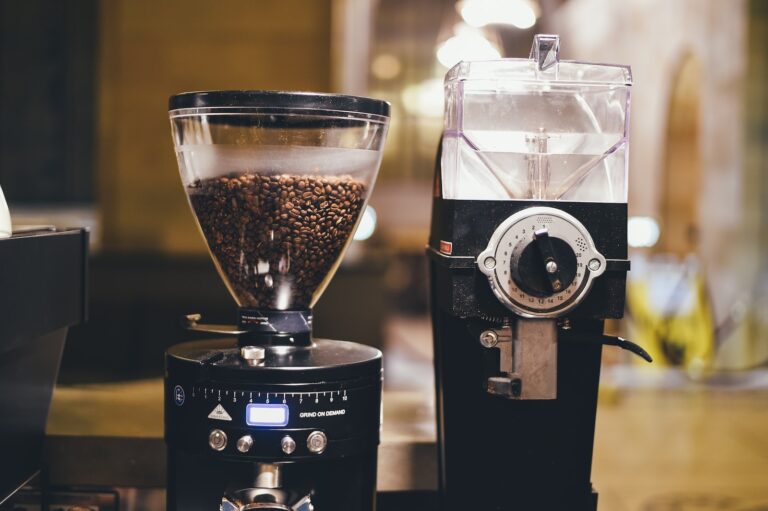Ah, the humble latte – a beloved coffee beverage enjoyed by millions worldwide. But have you ever admired those intricate designs etched into the foamy surface, transforming a simple cup of coffee into a work of art?
Welcome to the captivating world of latte art, where skilled baristas blend creativity with technique to create breathtaking designs in every cup. If you’re a coffee enthusiast who dreams of mastering this art form, you’ve come to the right place.
In this blog post, we’ll explore the secrets, tips, and tricks that will elevate your latte art game and unleash your inner barista.
The Art of Milk Steaming
The foundation of latte art lies in the perfect milk steam. Achieving the right texture and temperature is crucial for creating those silky-smooth designs. Here are a few pointers to help you master the art of milk steaming:

Use fresh, cold milk: Always start with fresh, cold milk to ensure optimal results.
Purge the steam wand: Before steaming, purge the steam wand to remove any residual water.
Submerge the steam wand: Submerge the steam wand just below the surface of the milk to create a whirlpool effect.
Stretch and texture: As you steam the milk, gently move the pitcher up and down to incorporate air, creating a velvety microfoam.
Listen for the paper tearing sound: When you hear a subtle “paper tearing” sound, it’s a sign that you’ve achieved the perfect texture.
Aim for a temperature of 55-60°C (131-140°F): This temperature range ensures that the milk is hot enough for the art but not too hot to scald.
The Basics of Latte Art
Latte art primarily involves two main elements: steamed milk and espresso. The steamed milk creates the creamy foam layer on top of a shot of espresso, which is then used to create various designs on the surface of the drink.
To begin with, you’ll need to have a good understanding of how to properly steam and froth milk. It is essential to achieve smooth and velvety textured milk to create beautiful latte art patterns. Different techniques can be used to steam milk, but most commonly used are pouring from low or high height or using specific tools such as frothing pitchers.
The History of Latte Art
Latte art is a form of artistic expression that has become increasingly popular in recent years, particularly within the coffee culture community. What began as a simple way to add visual appeal to a cup of latte evolved into a creative and sophisticated skill practiced by baristas all over the world. But where did it all begin? Let’s take a journey through the history of latte art and discover how it came to be.
The origins of latte art can be traced back to Italy in the 1980s when espresso drinks first became popular. It was during this time that Italian cafes started serving cappuccinos and lattes, which were made with frothed milk on top of espresso shots. As these drinks gained popularity, baristas started experimenting with different ways to make them visually appealing.
One early example of latte art was called “monk’s head,” which involved pouring steamed milk into an espresso shot from the side rather than directly on top, creating a circle shape resembling a monk’s hood or tonsure. Another common design was known as “wings,” which involved pouring two streams of steamed milk at angles onto an espresso shot, creating patterns resembling wings.
Essential Tools for Creating Latte Art
Creating latte art is a skill that requires practice, patience, and the right tools. While you can definitely create beautiful designs with just a plain milk pitcher and espresso machine, having the essential tools specifically designed for latte art will make your creations even better. In this section, we will discuss the must-have tools for creating amazing latte art.
1] Milk Pitchers: Milk pitchers are an essential tool for creating latte art as they allow you to control the flow of milk while pouring it into your espresso shot. Look for pitchers with pointed spouts and a comfortable handle to give you more precision and control in your pouring technique.
2] Espresso Machine: Of course, you cannot create latte art without a good-quality espresso machine. Make sure to have one that produces consistent shots of espresso with a rich crema layer, as this is crucial in creating contrast and depth in your designs.
3] Latte Art Stencils: These stencils come in various shapes and designs such as hearts, stars, or flowers. They are placed on top of the coffee cup before pouring steamed milk to create intricate patterns on the foam layer. They are perfect for beginners or those who want to add some variety to their designs.
Tips and Tricks for Perfecting Your Designs
Creating beautiful latte art takes practice and skill, but there are also some tips and tricks that can help you perfect your designs. In this section, we will share some insider secrets to help you create the perfect latte art.
1] Start with High Quality Ingredients
One of the most important factors in creating great latte art is starting with high quality ingredients. Use freshly roasted coffee beans for a rich and flavorful espresso base. The milk used should be fresh and whole, as it creates a creamier texture and better foam for latte art.
2] Perfect Your Milk Texturing Technique
To achieve the smooth, velvety microfoam needed for intricate designs, mastering your milk texturing technique is crucial. First, ensure that you are using a cold pitcher and cold milk – this helps create a greater temperature differential between the steam wand and milk which results in more consistent foam. When steaming the milk, keep the steam wand just below the surface of the milk to incorporate air evenly throughout.
3] Practice Makes Perfect
As with any form of art, practice makes perfect when it comes to latte art. Take some time every day to practice creating different designs – start with simpler patterns like hearts or tulips before moving onto more complex ones like rosettas or swans. Keep experimenting until you find what works best for you.
Inspiration and Resources for Unique Designs
Creating unique designs in latte art requires both inspiration and resources. In order to develop your own distinct style, it is important to constantly seek out new ideas and techniques, as well as have access to the right tools and materials. In this section, we will discuss various sources of inspiration and resources that can help you elevate your latte art game.
1] Social Media:
Social media platforms like Instagram, Pinterest and Facebook are treasure troves of inspiration for latte artists. By following popular latte art accounts or using hashtags such as #latteart or #coffeeart, you can discover a wide range of designs from different artists around the world. You can also use these platforms to promote your own work and get feedback from the community.
2] Art Galleries:
Traditional art galleries may not seem like an obvious source of inspiration for latte art, but they can offer a wealth of ideas for creating unique designs. Visit local galleries or browse online exhibitions to explore different forms, textures and colors that could be translated into your latte creations.
3] Nature:
Mother nature never fails to amaze us with its intricate patterns, shapes and colors. Take a walk in the park or go on a hike and pay attention to the details in plants, flowers and landscapes – you may be surprised at how these natural elements can inspire your next design!
How to Incorporate Latte Art into Your Business or Home Routine
Latte art has become an essential aspect of the coffee experience, whether you are a barista in a café or simply making coffee at home. It adds an aesthetic appeal to your coffee and enhances the overall drinking experience for both you and your customers. If you want to elevate your love for latte art, here are some tips and tricks to help you incorporate it into your business or home routine.
1] Start with Quality Ingredients: The first step to creating beautiful latte art is using quality ingredients. Using freshly roasted, high-quality coffee beans will not only improve the taste of your latte but also make it easier to create latte designs. Similarly, using fresh, cold milk can give you better texture and consistency for steaming.
2] Master Your Milk Steaming Technique: A crucial aspect of creating latte art is perfecting the steaming technique for milk. For beginners, start by practicing on small amounts of milk until you achieve the right texture – glossy microfoam without any large bubbles. Use a thermometer to ensure that the milk is between 140-160 degrees Fahrenheit before pouring onto espresso shots.
3] Invest in Good Quality Tools: While it’s possible to create latte art with just a basic pitcher and spoon, investing in good quality tools can make all the difference in achieving intricate designs. Barista-specific pitchers have narrow spouts that allow more control when pouring milk onto espresso shots, making it easier to create detailed patterns.
Conclusion: The Joy and Creativity of Latte Art
Latte art is not just about creating visually appealing designs on a cup of coffee. It is an art form that requires skill, practice, and creativity. For many baristas and coffee lovers, latte art is also a source of joy and satisfaction.
The process of pouring steamed milk into espresso to create intricate designs involves both technical precision and artistic expression. This unique combination makes latte art a fun and fulfilling activity for those who are passionate about it.
For baristas, mastering the techniques of latte art can be a rewarding experience. It takes time to perfect the techniques such as free pouring, etching, or using stencils to create different patterns. However, once they have mastered these skills, baristas can express their creativity through their lattes by experimenting with different designs and elements.
One of the most exciting aspects of latte art is that there are no limits to what you can create. From simple heart or rosetta designs to more intricate shapes like animals or landscapes – the possibilities are endless. This allows baristas to continuously challenge themselves and improve their skills while having fun in the process.







